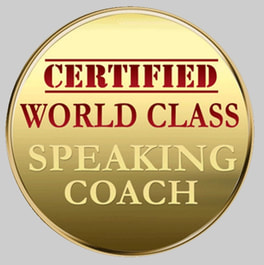
How long should my question and answer session last?
What happens if I don’t know the answer to a question?
What happens if an audience member tries to take over my Q & A?
In this new 3 part blog I will answer all these questions and more, as well as offer you World Class tips, tools and techniques to take the stress out of your next Q & A session. Holding a worthwhile and engaging Q & A is not that difficult, but you do need to know what you’re doing.
In Part 1 I will cover the essentials of structuring your Q & A so that you can avoid all the pitfalls, giving you the best opportunity for a truly engaging session. Part 2 will offer top tips to avoid unexpected and difficult situations. Part 3 will bring it all together with powerful yet easy to employ guidelines for success.
I’m going to start with a golden rule. Please note, I don’t like hard and fast rules in the world of public speaking. The truly professional speaker understands that spontaneity and adaptability are at least as important as following rules. That said, here comes an important rule for guaranteeing a successful Q & A! Are you ready?
TOP TIP: Do not end your speech with your Q & A
99.9999999% of speakers end their speeches with their Q & A session. Don’t!
If you finish your presentation with a Q&A session, you will have very little control over the last words spoken. Why is that important?
World class public speaking expert Patricia Fripp once said, “Your last words linger.” The final words spoken (whether they are spoken by you or a member of the audience) will become the words most loudly echoing in your audience’s minds afterwards. You absolutely need to have full control over what those words will be.
2 years ago I spoke to a farmer who delivered a highly persuasive speech entitled “Organic Farming will be the New Norm” to a group of contemporaries. His message was clear (even the title gives it away). Unfortunately he made a damaging error right at the end of his otherwise superb presentation. He decided (like most speakers do) to finish his speech by holding his Question and Answers session. As it turned out, the final question he was asked involved an obscure issue relating to horse feed. The conversation between speaker and questioner went on for 2 minutes before the speech ended.
What was foremost in the audience’s minds after the speech finished? Horse feed! What should have been in their minds? The speaker’s message!
This may seem like a subtle issue, but I assure you it can blow up big time. The impact of your message can be diluted, as my farmer friend discovered. When he later discussed his presentation with individual audience members they tended to remark on the “horse feed” issue. It became a disproportionately prominent sub-topic in people’s minds.
Your audience tends to recall best what they heard first and what they heard last in any presentation. Make sure your last words are directly related to your overall message (in a future blog I will return to crafting effective conclusions). Make sure you have full control over those final words. So…
When should you hold your Q & A session?
Answer: Right before you begin the conclusion of your presentation!
Begin your Q & A session by saying something like, “Before I finish I would like to take a couple of questions…” Finish your Q & A by saying something like, “Thank you very much for those questions. To conclude I would like to say…”
There is of course a… drum roll… exception to this rule. Yeah, like I said no rule is 100%. It is acceptable to end your presentation with a Q & A when you are 1 of a group of speakers where the time only permits 1 collective Q & A session.
If the agenda is such that you are 1 of a group of speakers afforded a single collective Q & A session, then you must (out of professional politeness) adhere to the rules of the agenda. You can, however, cleverly insert your overall message (or other key presentation points) into the answers of any questions you are asked, as long as you are not repetitive and blatant about it. And make sure you always answer the question you are asked!
That’s an important tip that might seem obvious but it’s worth re-iterating:
Answer the Question you are Asked!
In Part 2 we will discover the secrets to keeping full control over your Q & A, handling all the difficult scenarios that can arise, while keeping your audience on your side.
Stay tuned!
Author: Eddie O'Hanlon
What happens if I don’t know the answer to a question?
What happens if an audience member tries to take over my Q & A?
In this new 3 part blog I will answer all these questions and more, as well as offer you World Class tips, tools and techniques to take the stress out of your next Q & A session. Holding a worthwhile and engaging Q & A is not that difficult, but you do need to know what you’re doing.
In Part 1 I will cover the essentials of structuring your Q & A so that you can avoid all the pitfalls, giving you the best opportunity for a truly engaging session. Part 2 will offer top tips to avoid unexpected and difficult situations. Part 3 will bring it all together with powerful yet easy to employ guidelines for success.
I’m going to start with a golden rule. Please note, I don’t like hard and fast rules in the world of public speaking. The truly professional speaker understands that spontaneity and adaptability are at least as important as following rules. That said, here comes an important rule for guaranteeing a successful Q & A! Are you ready?
TOP TIP: Do not end your speech with your Q & A
99.9999999% of speakers end their speeches with their Q & A session. Don’t!
If you finish your presentation with a Q&A session, you will have very little control over the last words spoken. Why is that important?
World class public speaking expert Patricia Fripp once said, “Your last words linger.” The final words spoken (whether they are spoken by you or a member of the audience) will become the words most loudly echoing in your audience’s minds afterwards. You absolutely need to have full control over what those words will be.
2 years ago I spoke to a farmer who delivered a highly persuasive speech entitled “Organic Farming will be the New Norm” to a group of contemporaries. His message was clear (even the title gives it away). Unfortunately he made a damaging error right at the end of his otherwise superb presentation. He decided (like most speakers do) to finish his speech by holding his Question and Answers session. As it turned out, the final question he was asked involved an obscure issue relating to horse feed. The conversation between speaker and questioner went on for 2 minutes before the speech ended.
What was foremost in the audience’s minds after the speech finished? Horse feed! What should have been in their minds? The speaker’s message!
This may seem like a subtle issue, but I assure you it can blow up big time. The impact of your message can be diluted, as my farmer friend discovered. When he later discussed his presentation with individual audience members they tended to remark on the “horse feed” issue. It became a disproportionately prominent sub-topic in people’s minds.
Your audience tends to recall best what they heard first and what they heard last in any presentation. Make sure your last words are directly related to your overall message (in a future blog I will return to crafting effective conclusions). Make sure you have full control over those final words. So…
When should you hold your Q & A session?
Answer: Right before you begin the conclusion of your presentation!
Begin your Q & A session by saying something like, “Before I finish I would like to take a couple of questions…” Finish your Q & A by saying something like, “Thank you very much for those questions. To conclude I would like to say…”
There is of course a… drum roll… exception to this rule. Yeah, like I said no rule is 100%. It is acceptable to end your presentation with a Q & A when you are 1 of a group of speakers where the time only permits 1 collective Q & A session.
If the agenda is such that you are 1 of a group of speakers afforded a single collective Q & A session, then you must (out of professional politeness) adhere to the rules of the agenda. You can, however, cleverly insert your overall message (or other key presentation points) into the answers of any questions you are asked, as long as you are not repetitive and blatant about it. And make sure you always answer the question you are asked!
That’s an important tip that might seem obvious but it’s worth re-iterating:
Answer the Question you are Asked!
In Part 2 we will discover the secrets to keeping full control over your Q & A, handling all the difficult scenarios that can arise, while keeping your audience on your side.
Stay tuned!
Author: Eddie O'Hanlon



 RSS Feed
RSS Feed
